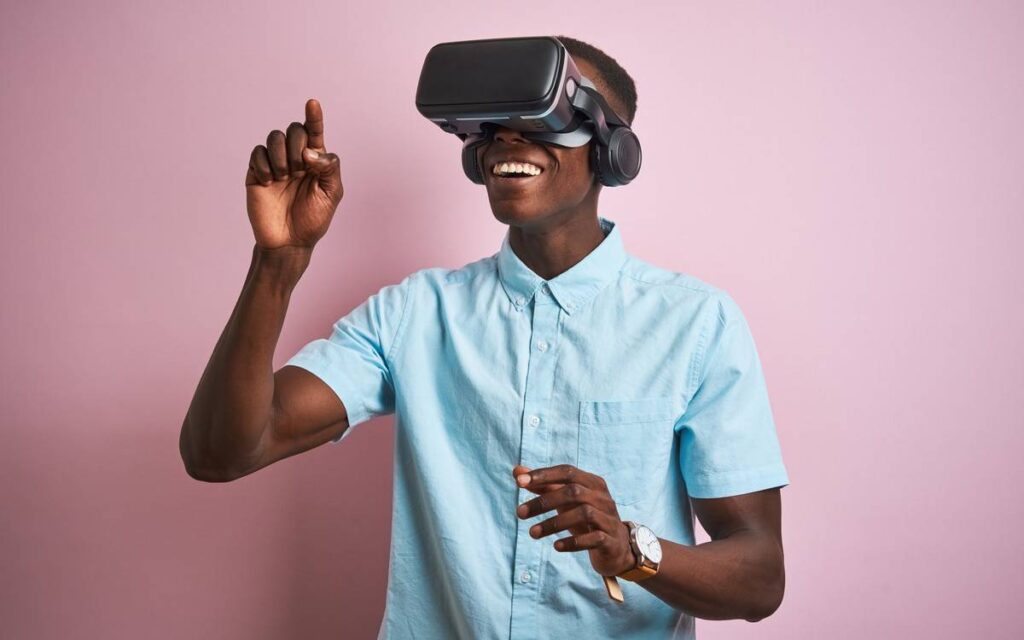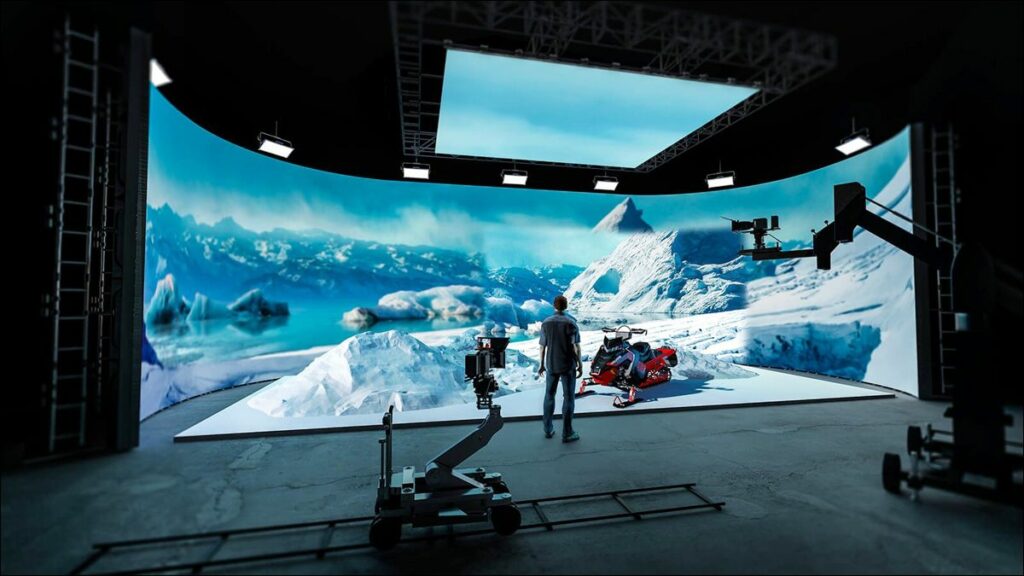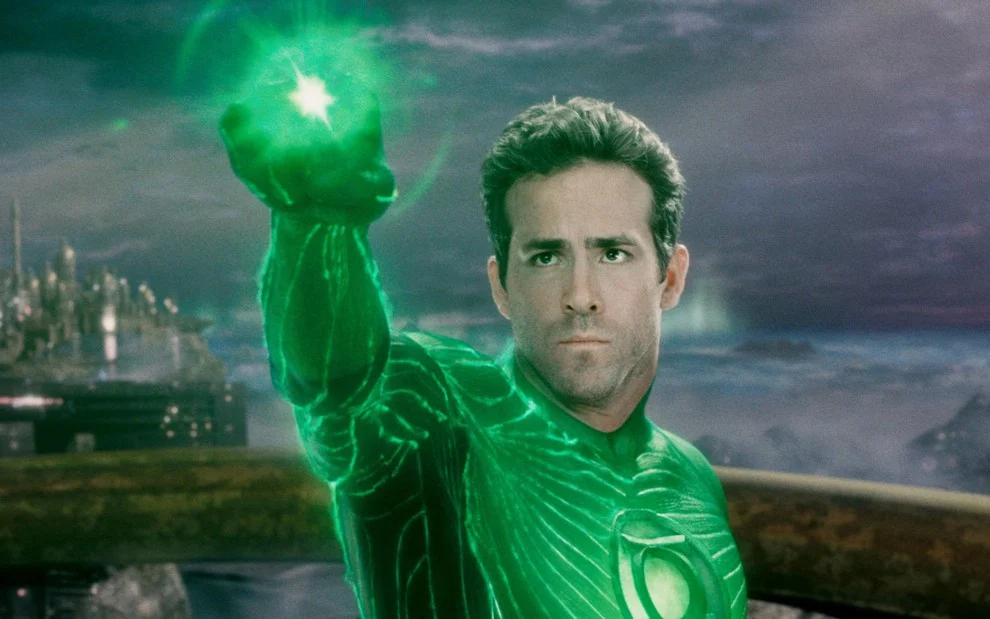Adverts
Virtual reality is transforming the way we experience cinema, taking us on an immersive journey that goes far beyond the limitations of the traditional screen.
Imagine entering the world of your favorite movie, not just as a passive spectator, but as an integral part of the story.
Adverts
This is the promise of virtual reality in cinema, a technology that is redefining entertainment and providing a complete sensory experience. This technological advancement is not just a passing fad; it is here to revolutionize the film industry, offering new forms of storytelling and interaction.
The fusion of virtual reality and cinema brings countless possibilities for filmmakers and viewers. Directors can now create fully immersive worlds where viewers can explore environments, interact with characters and even influence the unfolding of the plot.
Adverts
This new dimension of storytelling is capturing the imagination of many and opening doors to innovative genres and unique experiences. In addition, the immersion offered by virtual reality promises a deeper emotional connection with narratives, elevating the level of audience engagement.
However, this revolution also brings challenges. Adapting traditional narratives to the virtual reality format requires a rethinking of filming, editing and sound design techniques. In addition, issues around accessibility and the cost of technology still need to be addressed so that more people can enjoy this transformative experience. In this context, we will explore how virtual reality is shaping the future of cinema and what we can expect from this exciting frontier of entertainment. Get ready to discover how technology is transforming the seventh art into an unprecedented adventure. 🎬✨

Virtual Reality: The New Era of Cinema 🎬
Have you ever imagined being in the middle of an epic battle alongside your favorite heroes or exploring unknown planets without leaving your seat? Well, folks, virtual reality (VR) is making this possible! With the advancement of technology, cinema is no longer just about watching, but about living the experience. VR is breaking the barriers of the screen and transporting us to incredible universes, where we are the protagonists of our own adventure.
The magic begins with VR headsets, which allow us to immerse ourselves in hyper-realistic three-dimensional worlds. It’s as if you’ve been teleported to the film set. This technology is already being explored by visionary filmmakers, creating experiences that go beyond the traditional. Instead of just watching the action, you can interact with it, feeling like you’re part of the storyline.
The Magic of Interactivity in Virtual Cinema
Interactivity is the key to the virtual reality revolution in cinema. While in traditional films we are mere spectators, in VR we are active participants. Imagine having the ability to choose how a scene unfolds or influence the fate of a character. It's like being a director for a day, controlling the direction of the narrative with your decisions.
Interactive films are gaining momentum, and there are already platforms dedicated to this innovative format. They offer a range of choices, allowing each movie session to be a unique experience. This creates a stronger emotional connection with the story, as the consequences of our choices shape how events unfold.
The Challenges and Opportunities of Virtual Reality in Cinema
Virtual reality in cinema is not all sunshine and rainbows! There are some challenges that need to be overcome for this technology to become more accessible and popular. First, the cost of equipment is still a barrier for many. High-quality VR headsets and immersive sound systems can be expensive, limiting access to a full experience.
Another challenge is content. Creating VR films is a complex and expensive process, requiring new approaches to filming and editing. Narratives need to be adapted to a 360-degree format, which requires significant creative effort. In addition, the need for continuous user interaction can make production even more challenging.

Exploring New Worlds with Virtual Reality
With virtual reality, cinema has no limits. We're talking about exploring new worlds, folks! Remember that dream of traveling to distant planets or discovering ancient civilizations? With VR, these dreams are closer than ever. Virtual reality films are like a gateway to the unknown, offering the chance to experience scenarios that previously only existed in our imagination.
The ability to create hyper-realistic environments is one of VR’s greatest strengths. The details are stunning, from the texture of the alien ground to the brightness of the stars in the sky. This allows viewers to feel as if they are actually there, walking through surreal landscapes and interacting with exotic creatures. It’s an experience that goes beyond the visual, stimulating our senses and our imagination.
Cultural and Social Impact of Virtual Reality in Cinema
Virtual reality in cinema is not only a technological revolution, but also a cultural and social one. We are living in a time when the barriers between the real and the virtual are becoming increasingly blurred, and this is changing the way we connect with the world and with each other.
VR is democratizing access to cultural experiences, allowing people from different parts of the world to share stories and experiences in an immersive way. This is creating a new form of empathy and cultural understanding, as audiences can experience realities different from their own. It’s a golden opportunity to build bridges between cultures and broaden our horizons.
Virtual Reality and the Future of Cinema
The future of filmmaking with virtual reality is exciting, folks! We’re just scratching the surface of what this technology can offer. As VR becomes more accessible and the creative tools evolve, we can expect an explosion of creativity and innovation in the film industry.
Narratives will become increasingly complex and interactive, challenging the audience to actively participate in the construction of the story. The evolution of motion capture and artificial intelligence technologies also promises to take immersion to a new level, creating even more realistic and personalized experiences.

Conclusion
The virtual reality (VR) revolution in cinema is redefining the boundaries of the cinematic experience, providing immersion that goes beyond the traditional screen. As technology advances, viewers are no longer mere observers, but active participants within the cinematic universe. With the use of VR devices, audiences are transported into fictional worlds like never before, allowing for a deeper emotional connection and an enriched sensory experience. In addition, VR cinema opens up new opportunities for filmmakers, encouraging innovation and the creation of interactive and dynamic narratives. 🌟
However, as technology continues to evolve, challenges remain. Accessibility of equipment and the need for specialized production are barriers that need to be overcome for this revolution to become mainstream. Despite this, the potential of virtual reality cinema is undeniable, promising to transform the way we consume and interact with visual stories.
So by embracing this new era, we are not only expanding the horizons of entertainment, but also redefining the art of storytelling. The future of cinema is undoubtedly immersive and full of possibilities. With each advancement, we are closer to a truly limitless cinematic experience. 🎥
- Virtual reality is transforming cinema into an immersive experience.
- Interactive films allow audiences to actively participate in the narrative.
- Challenges include the high cost of equipment and the complexity of production.
- Opportunities include new ways of telling stories and exploring cultures.
- The future of VR cinema promises innovations in several industries beyond entertainment.




